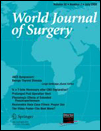Minimally Invasive Thyroid Surgery for Single Nodules: An Evidence-based Review of the Lateral Mini-incision Technique
Abstract
Background
Minimally invasive thyroidectomy techniques are being developed in an effort to minimize pain, shorten the length of hospital stay, and improve cosmesis. Various minimally invasive thyroid surgery (MITS) techniques have been shown to be safe and feasible with some benefits in terms of cosmesis and pain outcomes; however, no single technique has been broadly accepted. This study was designed to review the evidence in relation to MITS and our experience with the direct lateral mini-incision technique.
Methods
A review of literature published until December 2007 on minimally invasive thyroidectomy techniques was undertaken. Three issues were addressed: 1) Does MITS provide any benefit compared with conventional open thyroidectomy? 2) Is there any advantage to the use of endoscopic or video-assisted techniques compared with the direct mini-incision technique? 3) Is the lateral mini-incision technique safe and efficacious? Additional data in relation to the above issues was derived from a retrospective cohort study of patients undergoing mini-incision thyroid surgery within our unit.
Results
Issue 1: Five prospective randomized studies and eight studies at a lower level of evidence have demonstrated consistent advantages of MITS compared with open thyroid surgery in terms of reduced pain and improved cosmesis with equivalent operative safety. Issue 2: In compiling four level III and IV studies that compared open and video-assisted minimally invasive surgery, there do not seem to be significant differences in patient satisfaction with the incision. The video-assisted approaches require significantly longer operative times but also seem to be less painful. Issue 3: Three cohort studies (level IV) have demonstrated that the lateral mini-incision technique is both safe and efficacious compared with open surgery for hemi-thyroidectomy. Data from our cohort study of 1281 patients (open hemi-thyroidectomy 1054 vs. MITS 227) confirmed MITS to be a safe and effective procedure. The rate of postoperative hematoma formation and wound infection was equivalent between groups. The rate of permanent recurrent laryngeal nerve injury was 0.4% for MITS and 0.3% for CHT and not significantly different (p = 0.7).
Conclusions
MITS has demonstrated advantages over conventional open approaches for both hemi- and total thyroidectomy and the benefits do not depend on the open or video-assisted approach. For thyroid lobectomies, the lateral mini-incision approach can be performed with an operative time and postoperative complication profile equivalent to conventional hemi-thyroidectomy while providing excellent cosmesis with a 2–3 cm scar.




